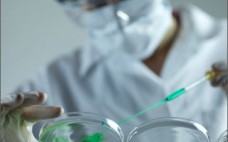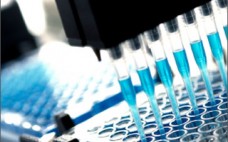The biomanufacturing industry has issues. From key drivers and hurdles, to the spectre of leachables legislation and the need for greater harmonization between suppliers, the biotech sector is experiencing a period of growing competition and increasing pressure. But, it is also a market with a future; the commercial success of more than 350 approved biologics has prompted the biotechnology industry to accelerate discoveries in further protein-based therapeutics, placing greater emphasis upon the importance of biomanufacturing. In addition,…
Manufacturing
Supplier Innovation is an Imperative
As organizations begin their annual budgeting meetings, the question will inevitably arise: How can we reduce costs and still retain or improve our quality? For some, the answer to the first part may seem easy, but to have a packaged improvement plan that includes both aspects appears to be more indefinable. So what can the biopharm industry do to counter these daily pressures? The answer may not be as elusive as you think. Companies need to drive innovation…
Disposable Factory or Tailor Made Integration of Single-Use Systems?
The use of disposables in biopharmaceutical manufacturing has increased significantly during the last few years and is expected to grow substantially in the near future. Bioplan Associates report in their 2007 “Report and Survey of Biopharmaceutical Manufacturing Capacity and Production” that the main drivers for this ongoing trend continue to be the elimination of cleaning followed by the reduction of capital investment in facilities and the required equipment. However, with the further penetration of disposables into larger volumes…
Implementing Cost Reduction Strategies for HuMab Manufacturing Processes
To keep up with increasing clinical demand, antibody manufacturers are forced to adapt their methods to increase production without increasing costs. In this informative paper, Dr. Arunakumari Alahari, Senior Director of Process Development at Medarex, Inc., discusses several processes that can be implemented to reduce costs of manufacturing, including:
• Perfusion Process for Cell Line Amplification
• Perfusion Process for Cell Bank Preparation
• CHO Production Using In-House Medium
• High Capacity Non-Protein A Purification Processes
Read the full article to discover how innovative technologies and effective regulatory strategies can accelerate process development and reduce time-to-market.
Managing Solid Waste from Single-Use Systems in Biopharmaceutical Manufacturing
The increasing implementation of single-use systems (SUS) in biopharmaceutical manufacturing has been driven by multiple factors including cost reduction, increased flexibility, improved process development time, and reduced capital investment. But questions are being raised over the disposal of solid waste materials from this alternative technology. Disposal concerns may not be justified on financial considerations because solid-waste disposal costs represent only a small proportion of the total manufacturing costs when using disposable systems (1, 2). Furthermore, comparative studies have…
A Readily Available Source of BSA Consistently Supports Cultivation and Differential Gene Expression
Lyme disease caused by the spirochete Borrelia burgdorferi is the leading vector-borne illness in the United States (1). The natural infectious lifecycle of B. burgdorferi is complex in that it is necessary for the bacteria to colonize both an arthropod vector (the Ixodes scapularis tick, pictured right) and a mammalian host (2). As the bacteria transitions between those two diverse niches, it alters the expression of its major outer surface proteins (Osps) such that expression of those that…
Applying Good Engineering Practices to the Design of Single-Use Systems
Significant changes are being incorporated into biopharmaceutical manufacturing processes as a result of drivers such as increasingly strict regulatory demands, reduction of manufacturing costs, and outsourcing to contract manufacturing organizations (CMOs). Historically, many biopharmaceutical processes were designed and built based on cleanable, reusable stainless steel systems and unit operations. Today several industry drivers are shifting some unit operations toward single-use technologies, namely lowered cross-contamination, reduced capital investments, and desired further reduction in manufacturing costs and shortened drug development times (1,2,3).…
Quality Assessment in 3D Cultures of Disc-Chondrocytes
Autologous chondrocyte transplantation is a modern experimental therapy for treatment of degenerative intervertebral disc diseases. Several studies with animal models have shown that transplantation of cultivated autologous chondrocytes can delay progression of disc degeneration. A few products based on human autologous chondrocytes are already on the market. Repair of disc damages with grafted chondrocytes appears feasible in the near future. So chances are growing for clinical applications meant for restoration of original disc function. As a result, optimization and standardization…
Monitoring ATP Status in the Metabolism of Production Cell Lines
Because the development of industrial cell culture processes for production of recombinant proteins seeks high efficiency, reproducibility and predictability, it is important to have access accurate analytical tools. Although established analytical methods deliver useful data, they are incomplete because they only partially address the cellular metabolic state and also because no predictions can be made.
This paper discusses the process used to establish and evaluate an assay for rapid and reliable online measurement of intracellular ATP (adenoside-5′-triphosphate) to monitor the physiological state of cells in combination with other parameters (cell number, viability, and glucose consumption).
Considering Cell Culture Automation in Upstream Bioprocess Development
With the increasing importance of biologics in today’s pharmaceutical market, throughput and efficiency are crucial in developing a production cell line. Cell culture automation can be a good solution for high-throughput and labor-intensive areas of a development process. Because of the cost of the investment, there are many factors to be considered before committing to a purchase.
In this paper, Tim Gryseels, a senior scientist at Pfizer, discusses the important steps in identifying and purchasing cell culture automation, and how the automation process can reduce costs and increase throughput, efficiency and consistency.



